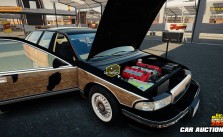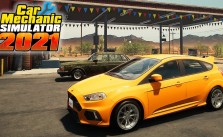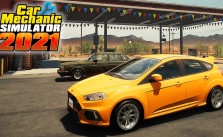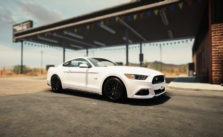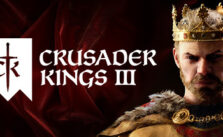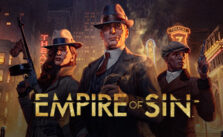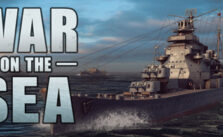War on the Sea – Units & Navigation

CONTROLLED UNIT
The unit (ship or aircraft) you are currently in direct control of is the “Controlled Unit”. The blue text above the toolbar shows the Controlled Unit’s name, speed, and heading.
Red text shows information about the Controlled Unit’s current target (if it has one).
The Controlled Unit is always highlighted on the Unit Roster.
The Controlled Unit can be steered directly through key commands.
The wanted speed in knots, rudder or turn setting and altitude/depth (if applicable) are temporarily displayed in the header of the Message Log whenever changed.
Tap or hold KeyPadPLUS and KeyPadMUNIS to change the speed of your unit.
Tap or hold KeyPad4 and KeyPad6 to turn the unit left or right.
Tap or hold KeyPad8 and KeyPad2 to modify depth or altitude.
Use KeyPad5 to set the steering to 0.
SWITCHING UNITS
There are multiple ways to switch your Controlled Unit:
1) LEFT CLICK map icon of a player-owned unit.
2) LEFT CLICK on a player-owned unit within the 3D world.
3) LEFT CLICK on the small arrow for that unit from the Roster list.
4) LEFT CLICK on the small arrow of a log message to go to the unit message refers to.
Switching to an enemy unit will move the camera to it, but does not change the unit you control/issue orders to.
SELECTING UNITS
There are multiple ways to select additional units to issue orders to:
1) LEFT CLICK Select All button under the Roster (to select/deselect all).
2) LEFT-CLICK the names in the Roster to toggle highlighting/selecting them.
3) LEFT CLICK to enter Selection Mode and LEFT CLICK map icons to toggle highlighting/selecting them. Use S key again or Escape to exit Selection Mode.
4) Use the S key to enter Selection Mode and LEFT CLICK units within the 3D world to toggle highlighting/selecting them. Use S key again or Escape to exit Selection Mode.
4
Enemy units cannot be selected as you cannot issue orders to them.
PLOTTING WAYPOINTS
Use the icon in map toolbar or W key to enter Navigation Mode.
Note the cursor changes to a ship’s wheel.
LEFT CLICK anywhere on the map to place one or more waypoints.
The controlled Unit will immediately steer towards and follow (course displayed as lines).
Use map toolbar, W, or Escape key again to exit Navigation Mode.
Steering left/right immediately cancel any course a unit was following.
Steering left/right immediately breaks formation if the unit was following another unit.
Using the Break button on the Orders panel (F7) will cancel any course or stop following another unit.
SETTING FORMATIONS
Select (highlight) several units.
Open the Orders panel (F7) and under the FORMATION section, use dropdown and distance slider to set the formation type and spacing distance.
Use the FORM UP button for all selected units to move into formation around the Controlled unit.
FOLLOW UNIT
Select any unit (friendly or enemy) as the target of the Controlled Unit.
Open the Orders panel (F7) and use Follow button to begin following the targeted unit at the distance specified on the formation spacing slider.
ORDERS PANEL
CONTROLS
Controls available depend on the type of Controlled Unit.
P. DEPTH – set submarine depth to periscope depth.
DIVE! – Crash dive a submarine.
E. BLOW – Emergency blow ballast on a submarine to attempt to immediately
surface. Cannot submerge again once executed.
SCOPE – Raise/lower the periscope on a submarine.
SILENT – Silent running for a submarine. Stop all repairs and reloading to go quiet and decrease detection.
Speed – slide to set the speed.
Turning – slide to set the turn rate.
Depth/Altitude – slide to set the depth of a submarine or altitude of aircraft.
FORMATION
BREAK – Controlled Unit immediately stops performing navigation; such as following another unit, being in formation with another unit, or following map waypoints. Applying any steering input to the Controlled Unit will also “BREAK” navigation.
FORM UP – All selected units will form up on the Controlled Unit using the pattern and spacing indicated below.
FOLLOW – The Controlled Unit will follow its target.
Formation Type – Select a formation pattern from the dropdown
(then use Form Up to execute the formation and spacing).
Formation Spacing – Set a distance using the slider
(then use Form Up to execute the formation and spacing).
COMBAT
ATTACK – all selected units immediately attack or engage the target of the Controlled Unit.
CEASE – all selected units cease firing.
Auto Flak – all selected units flak guns automatically engage hostile aircraft (will cease firing at surface targets).
RADAR – all selected units switch the Radar on or off depending based on whether the current unit is using the Radar.
SONAR – all selected units switch active Sonar on or off depending based on whether the current unit is using Active Sonar.
COLLISIONS
Sea units that strike terrain or another ship immediately lose speed. The speed at which the collision occurs determines how much damage (if any) may be incurred. Traveling at less than 5 knots usually results in no or minimal damage, while high speeds can cripple or outright destroy a ship due to extensive hull damage, flooding, and knocked-out subsystems.
SUBMARINE TEST & CRUSH DEPTHS
Hulls of submarines are constructed to withstand the immense water pressure at the depths they operate. For every 33 ft (10 m) of depth close to 1 atmosphere of pressure is added.
Test depth is the safe depth at which a submarine can operate; during sea trials, it has actually been reached. Crush depth is the actual depth causing the hull to structurally fail and implode, on average about 1.5x to 1.75x that of test depth.




